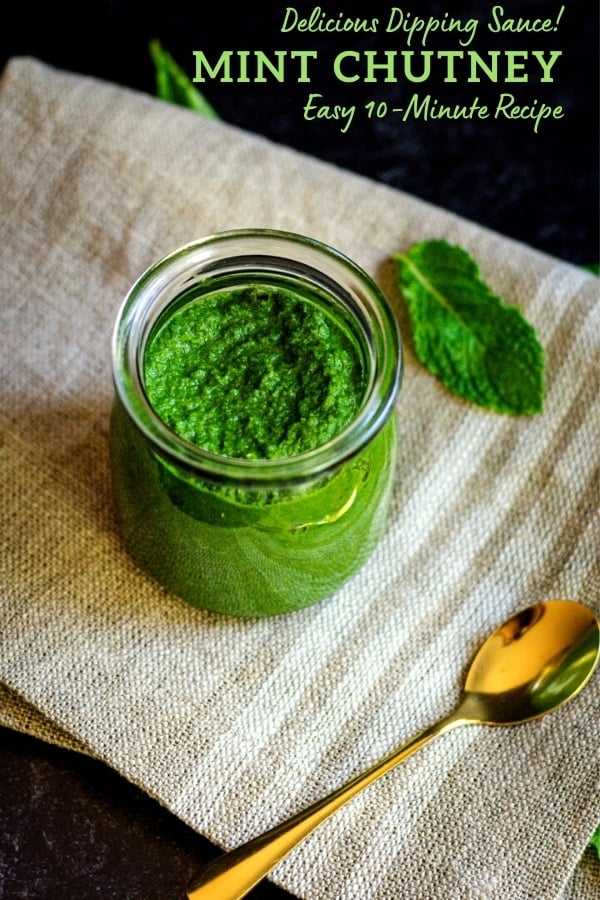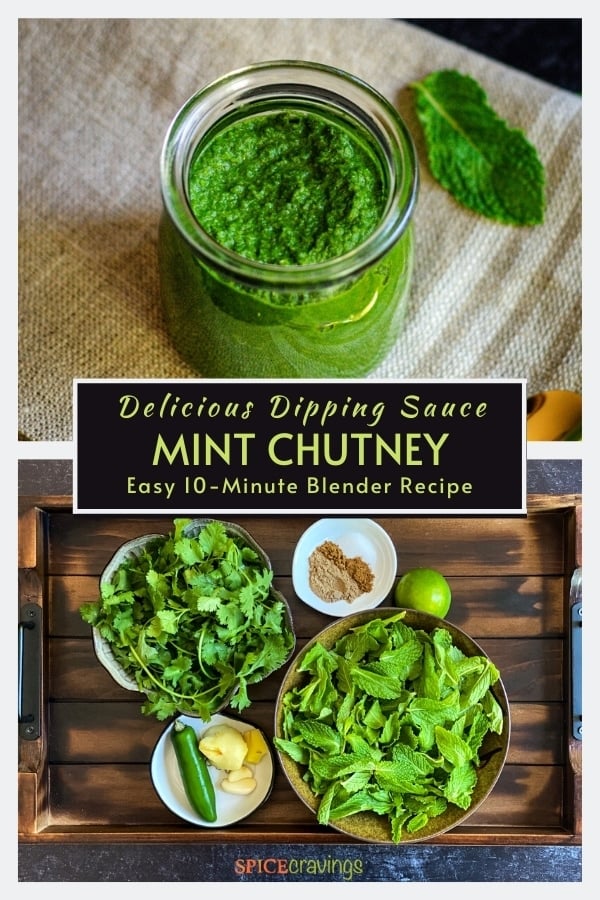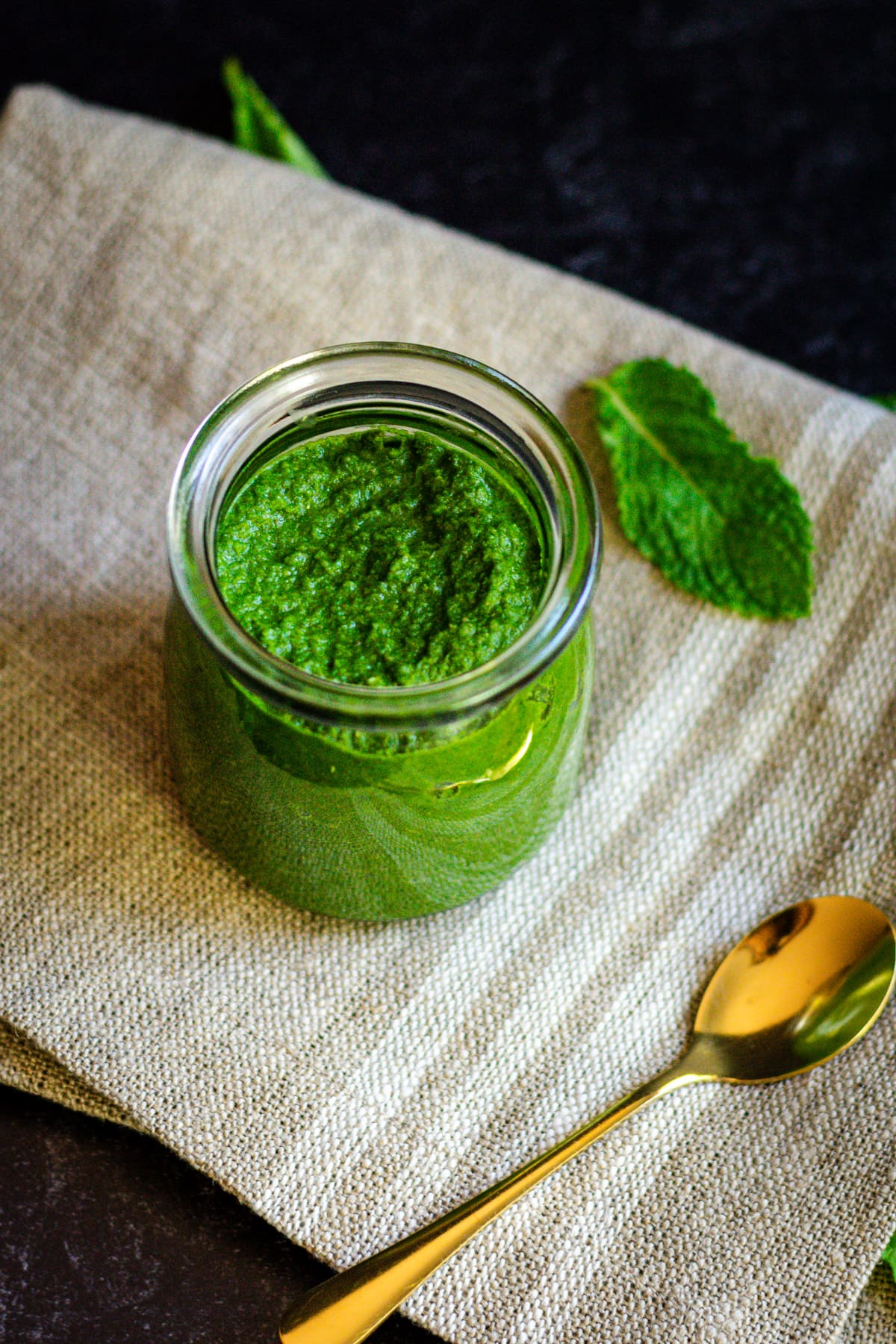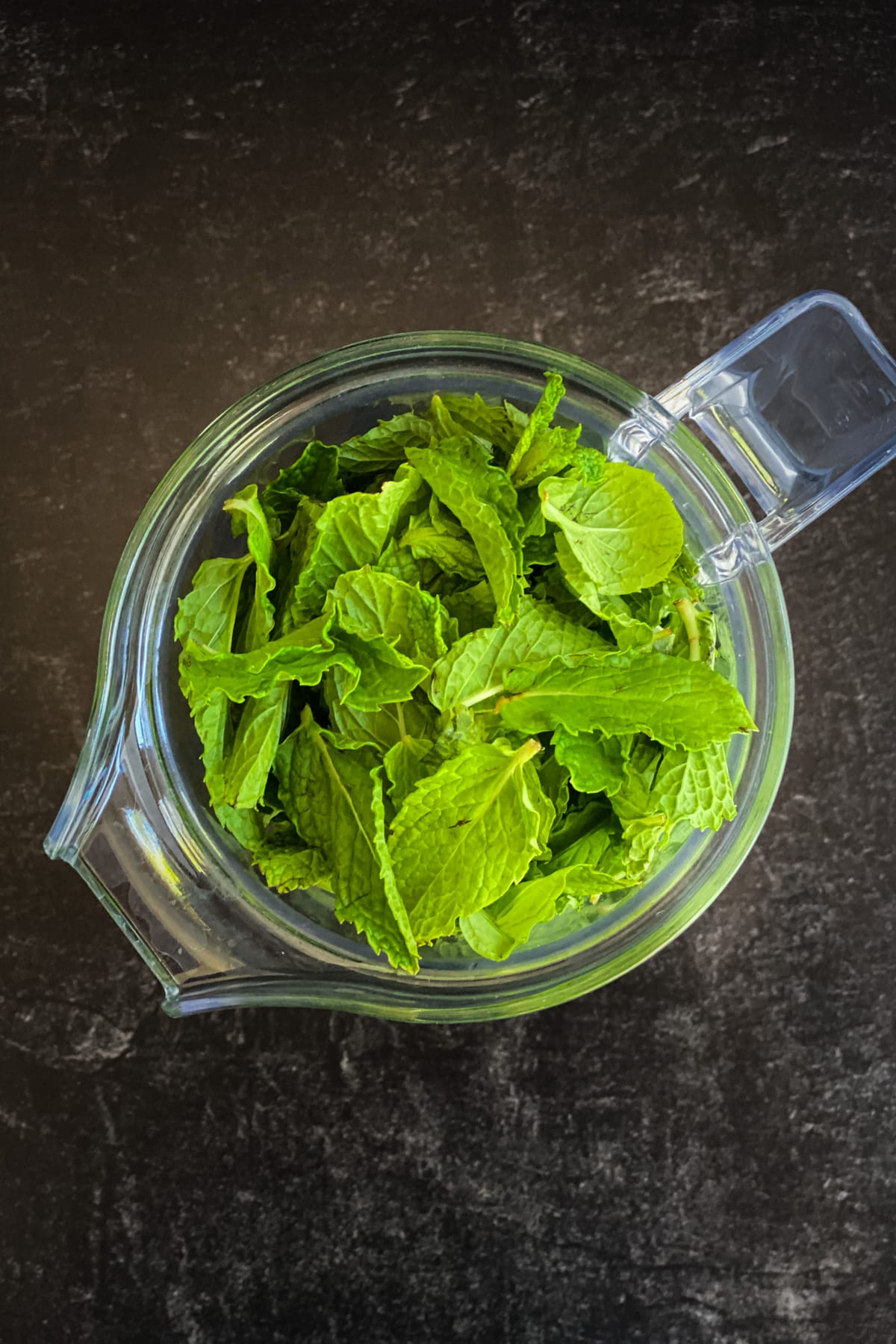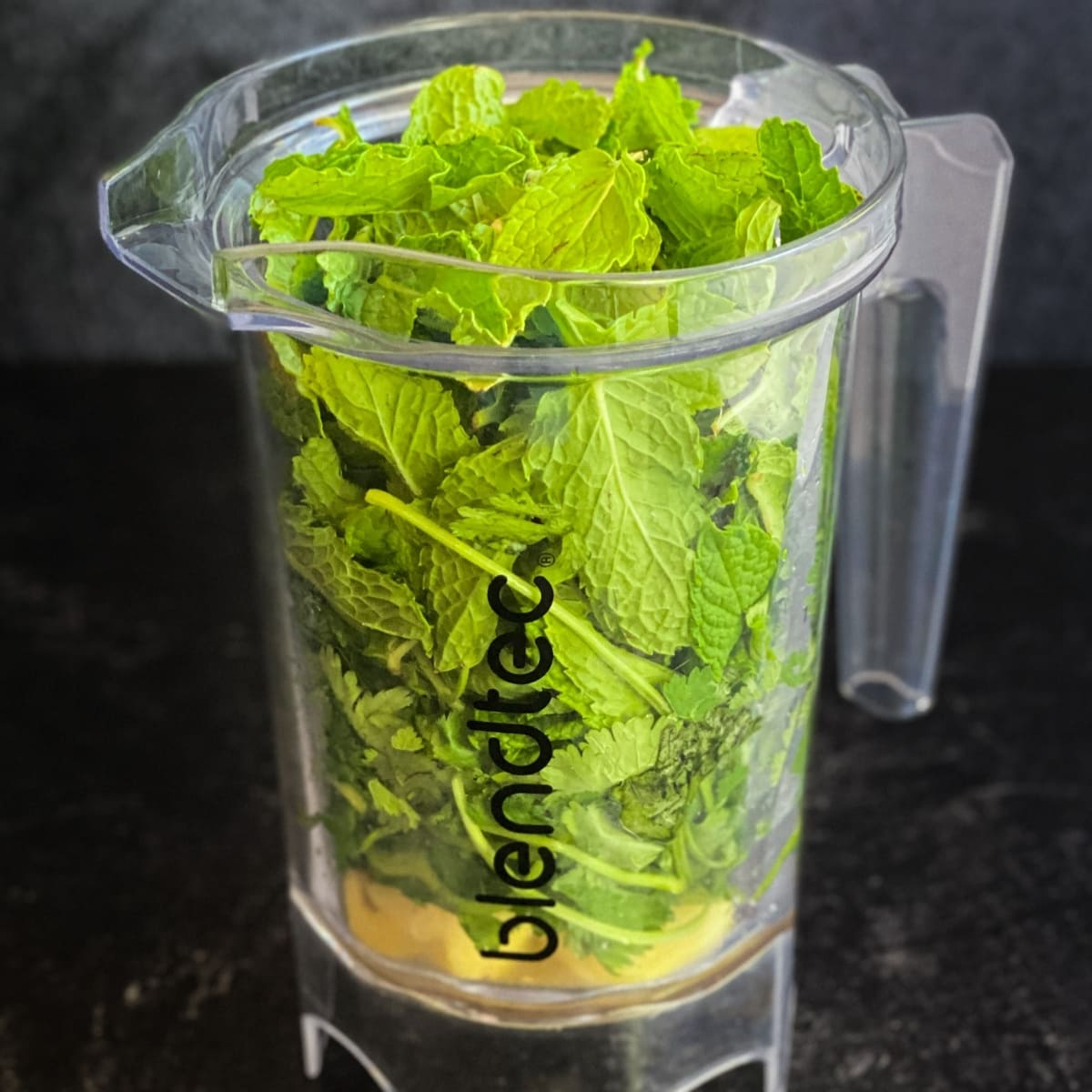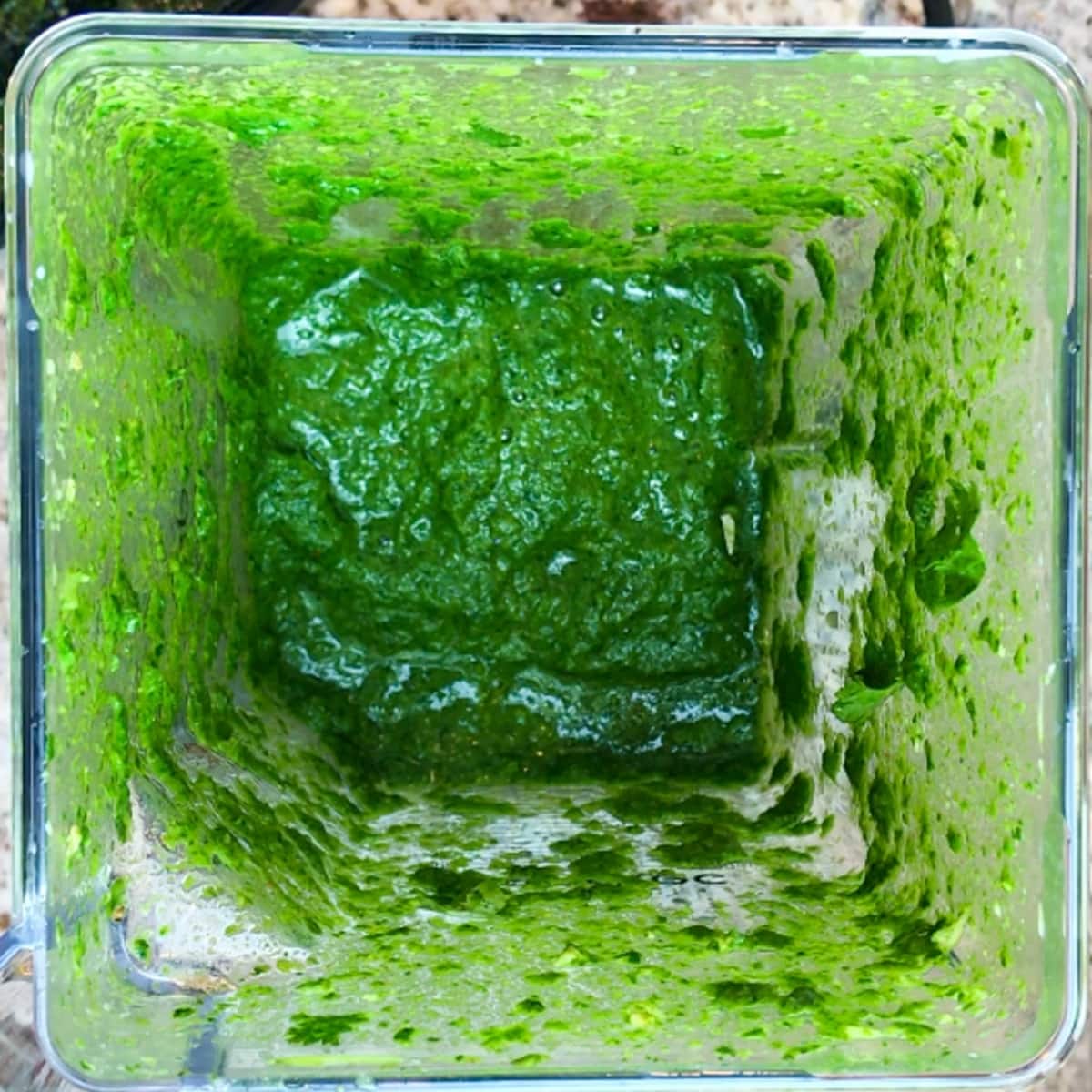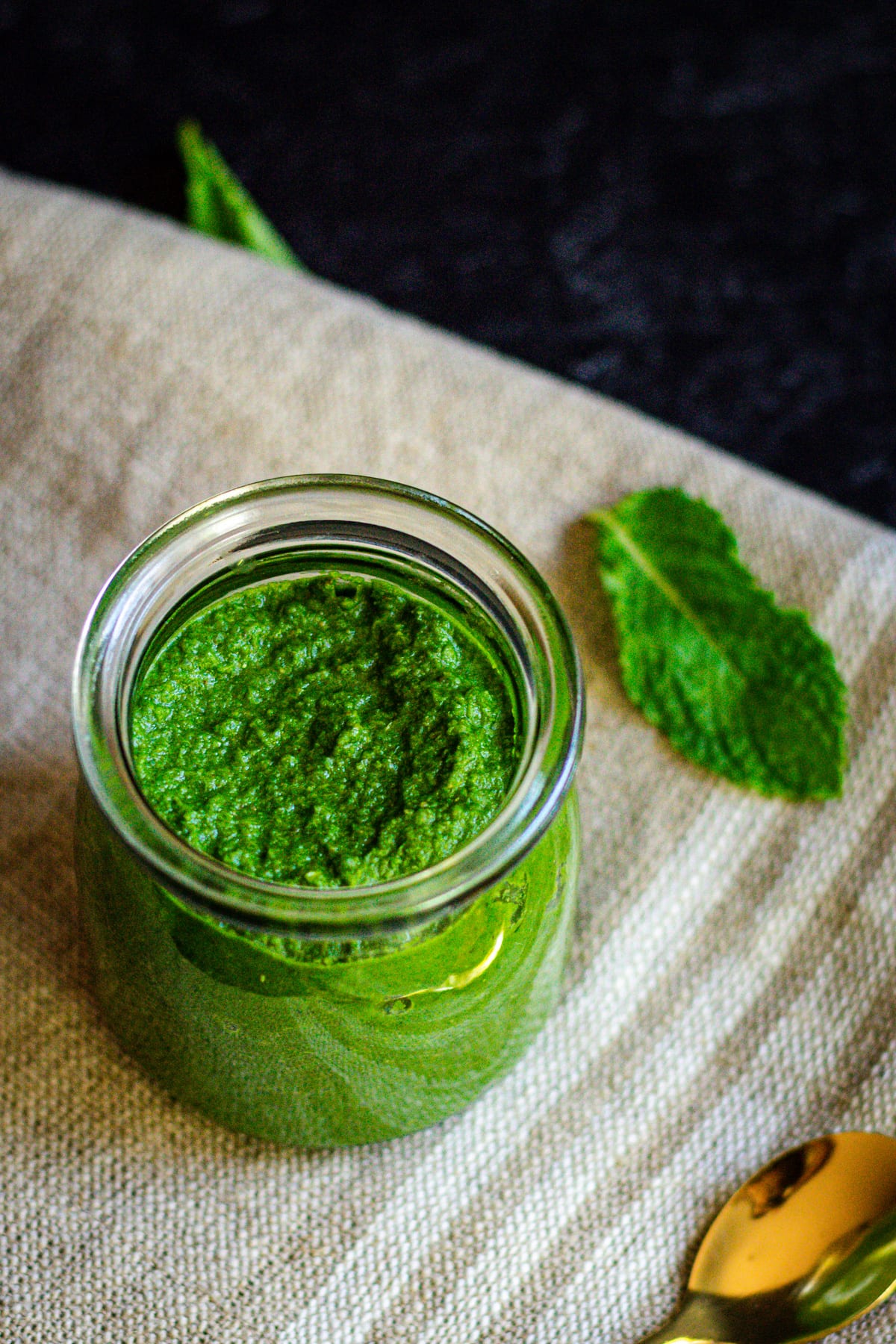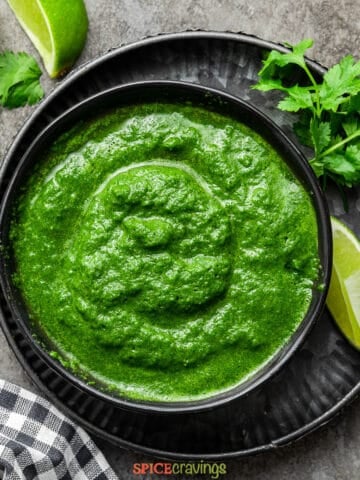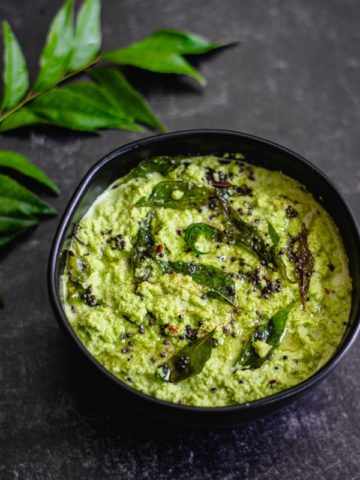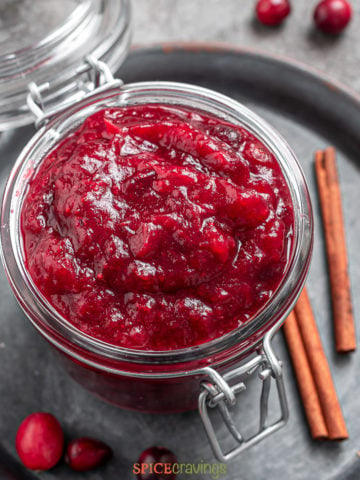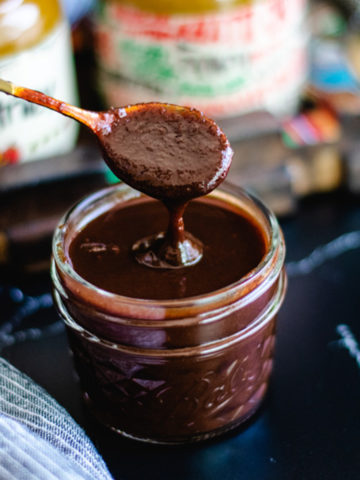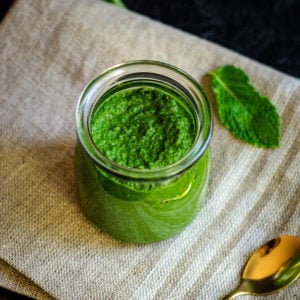Chutney is a quintessential condiment in Indian cuisine, celebrated for its burst of flavors and vibrant diversity. My refrigerator is always stocked with a jar of Green Chutney, Tamarind-Date Chutney, Cilantro Coconut Chutney, and Peach Chutney.
Today I’m sharing my go-to recipe for one of India’s most beloved condiments - Mint Chutney aka Pudina Chutney. This delectable green sauce is a harmonious blend of mint leaves, cilantro, zesty lime, and an assortment of aromatic spices. This fresh and flavorful dip is a perfect companion to an array of dishes. Whether it’s a traditional Indian feast or a casual BBQ, you can use it as a dipping sauce, spread, or as a marinade for paneer, chicken, fish, kebabs, and vegetables.
What is Chutney?
Chutney is a group of condiments or sauces in Indian cuisine, made with fruits, vegetables, or herbs mixed with lime or vinegar, sugar, or spices. The main purpose of chutney is to provide balance to Indian curries or highlight a specific flavor.
Pudina Chutney in English
Chutney’s equivalent in English or American culture would be relish. It has similar textures and complex flavors and is used to enhance a variety of foods. Today’s recipe features pudina - the Hindi word for mint. It is widely popular in India because mint is an herb that adds a cooling sensation to spicy curries and aids in digestion.
Ingredients - Notes & Substitutions
All it really takes is fresh herbs, a few aromatics, and a blender to make the chutney of your dreams. Here’s what you need:
Mint: Pick fresh vibrant green-colored stems with firm stems. Use only the leaves as the stems are woody and bitter. You will need two bundles or three (0.75-ounce) containers to get the full 1½ cups of leaves called for in the recipe. Cilantro: Fresh cilantro (or coriander leaves) has soft tender leaves and stems, with bitter roots. Trim off the bottom 2 inches of the root since they are bitter. Use the remainder of the leaves and tender bright green stems. Chaat Masala or Amchur: This spice blend adds a zing to the chutney. Look for it in specialty Indian markets or online. If unavailable, substitute with 1 teaspoon of fresh lime juice. Roasted ground cumin: It’s best to make your own by toasting ½ teaspoon of cumin seeds in the microwave for 1 to 3 minutes, then cool for 5 minutes. Here’s the roasted cumin powder recipe. Alternatively, use store-bought. Lime Juice: Use fresh lime or lemon juice for the best results. It makes a world of difference in flavor and locks in that beautiful green color. Aromatics: Fresh ginger, garlic, and green chili all enhance the flavor of chutney. To make the chutney mild, deseed the chili and remove its membranes. Sugar: A tiny bit of sugar balances the tangy and spicy flavors. Honey is a great substitute if you want to use unrefined sweeteners. For sugar-free chutney, skip it or use monkfruit sweetener instead. Ice or Chilled Water: This keeps the chutney cold while blending, preventing the herbs from releasing their oils and turning bitter.
Scroll to the recipe card for a detailed list of ingredients and quantities. The Purpose of Cilantro in Mint Chutney Recipe: You’ll notice that there is an equal amount of mint and cilantro in this recipe. Cilantro is included in the mix to balance the bitter taste of mint.
How to Make Cilantro Mint Chutney
This whole recipe takes 10 minutes from start to finish, with prep time included!
1. Prep the Herbs, Garlic & Ginger
Wash and dry cilantro and mint (see Cooking Tip below). Peel garlic and ginger, and gather all the ingredients. How to clean mint and cilantro: The best and most efficient way to clean herbs is to place the trimmed and untied bunch of herbs in a large bowl of cool water. Then, drain in a colander or spin in a salad spinner until dry. I do this 3 times. This gets rid of any dirt or soil hidden between the leaves.
2. Add Ingredients and Blend
Add all the ingredients into the blender jar starting with the ice (or water), aromatics, and then the leaves for easy blending. Hit the smoothie setting on your blender. If needed, add more chilled water in increments of 1 tablespoon. Blend until the chutney reaches a smooth consistency. Adjust the seasoning to taste.
Serving Suggestions: What Do You Eat Mint Chutney With?
There’s a variety of ways you can use this minty chutney. Here are some of my favorite ways:
Appetizer Dip: Serve mint chutney as a dip for appetizers like samosas, pakoras, and chaat items such as dahi bhalla, papri chaat, and sev puri. It adds a fresh and tangy flavor to Indian snacks. Sandwich Spread: Use it as a spread for sandwiches or wraps and Kathi rolls. It pairs well with grilled vegetables, paneer (Indian cottage cheese), or roasted meats. Marinade: Use mint chutney as a marinade for proteins, such as chicken, lamb, fish, or paneer. For 1 pound of protein, combine the following for marinade: 2 tablespoons chutney +¼ cup Greek yogurt + 2 teaspoons garam masala + ¾ teaspoon salt. Condiment for Grilled Proteins: Pair mint chutney with grilled proteins like paneer tikka, fish tikka, chicken tikka, seekh kebabs, or tandoori fish. The minty and tangy flavors help balance the richness of the proteins. Salad Dressing /Sauce with yogurt: Mix mint chutney with 2 tablespoons of yogurt, a dash of salt, and lime, and create a flavorful dressing for salads or sauce for kebabs and tikki. Dressing for Roasted Vegetables: Toss roasted vegetables like potatoes, carrots, or cauliflower in mint chutney before serving. It adds a vibrant flavor and helps elevate the roasted vegetables.
Storage Instructions
I find the taste and color of the Mint chutney to be the best the day I make it. You can store it in an airtight container in the fridge for up to 2 days. Keep in mind that the color will start to fade after a few hours. If you are looking to make the chutney for a party, simply prep all the ingredients the night before. Then, blend the day you are going to serve!
Recipe Tips & Notes
Trim cilantro. Always trim off the bottom 2 inches of the cilantro or coriander root since they are bitter. Discard mint stems. Pick the mint leaves from the stems and discard the stems. They are too woody and bitter. Use chaat masala, amchur or lime juice. I prefer to use Chaat masala or Amchur. But if unavailable, 1 teaspoon of fresh lime juice is a great substitute. Do not over-blend. Overmixing will cause the chutney to turn bitter. Blend just until the mixture is smooth. Serve with snacks, tandoori, or idli/dosa. Mint chutney is extremely regional and will vary based on the North or South. Check out the Serving Suggestions above for authentic ways to serve mint chutney. Enjoy fresh or within 2 days. I find the color, flavor, and nutrition to be the best on the day the chutney is made. That being said, you can store it in an airtight container for up to 2 days.
More Chutney and Condiment Recipes
These recipes are part of the Condiment and Sauces Series:
📖 Recipe
